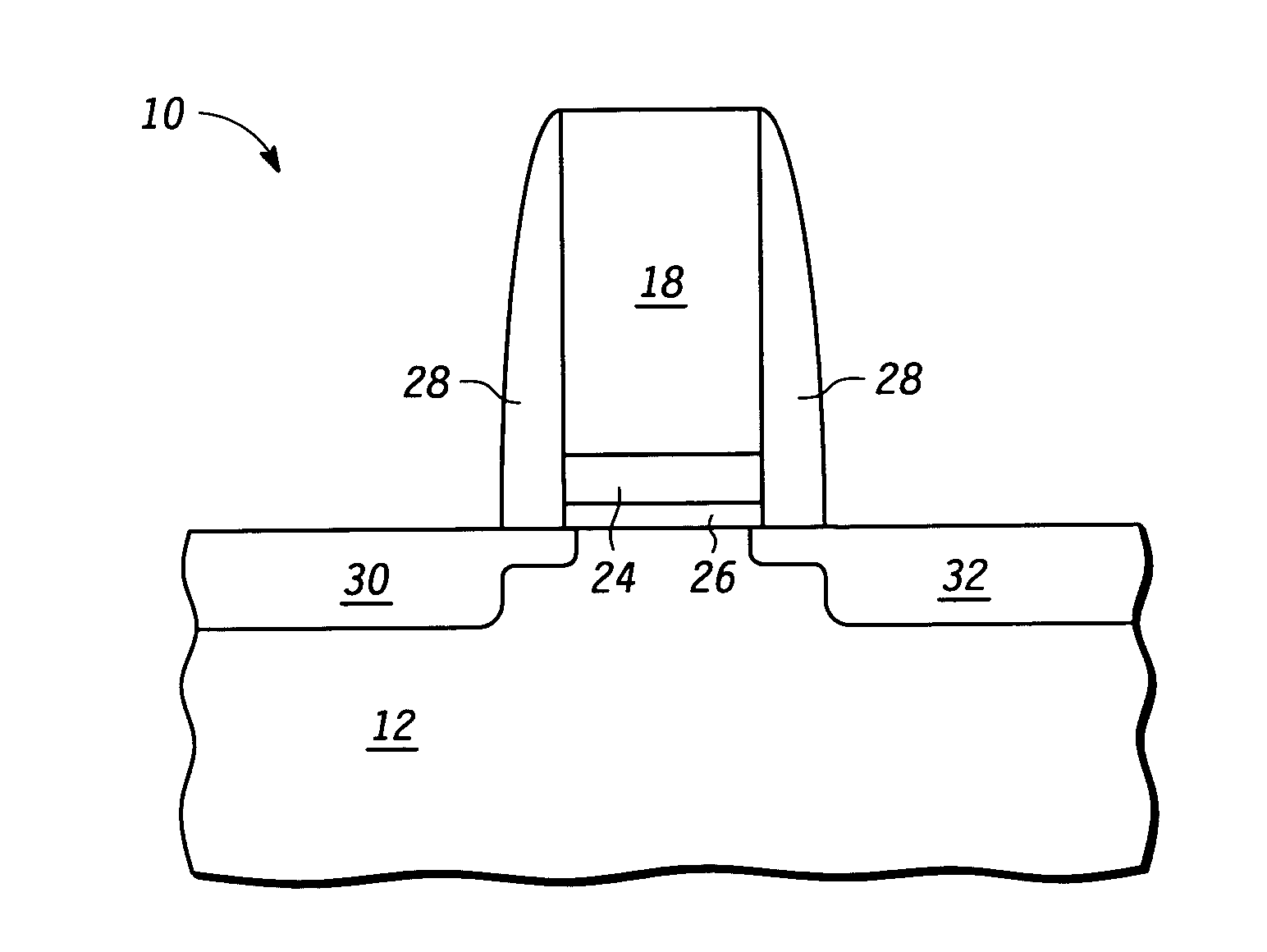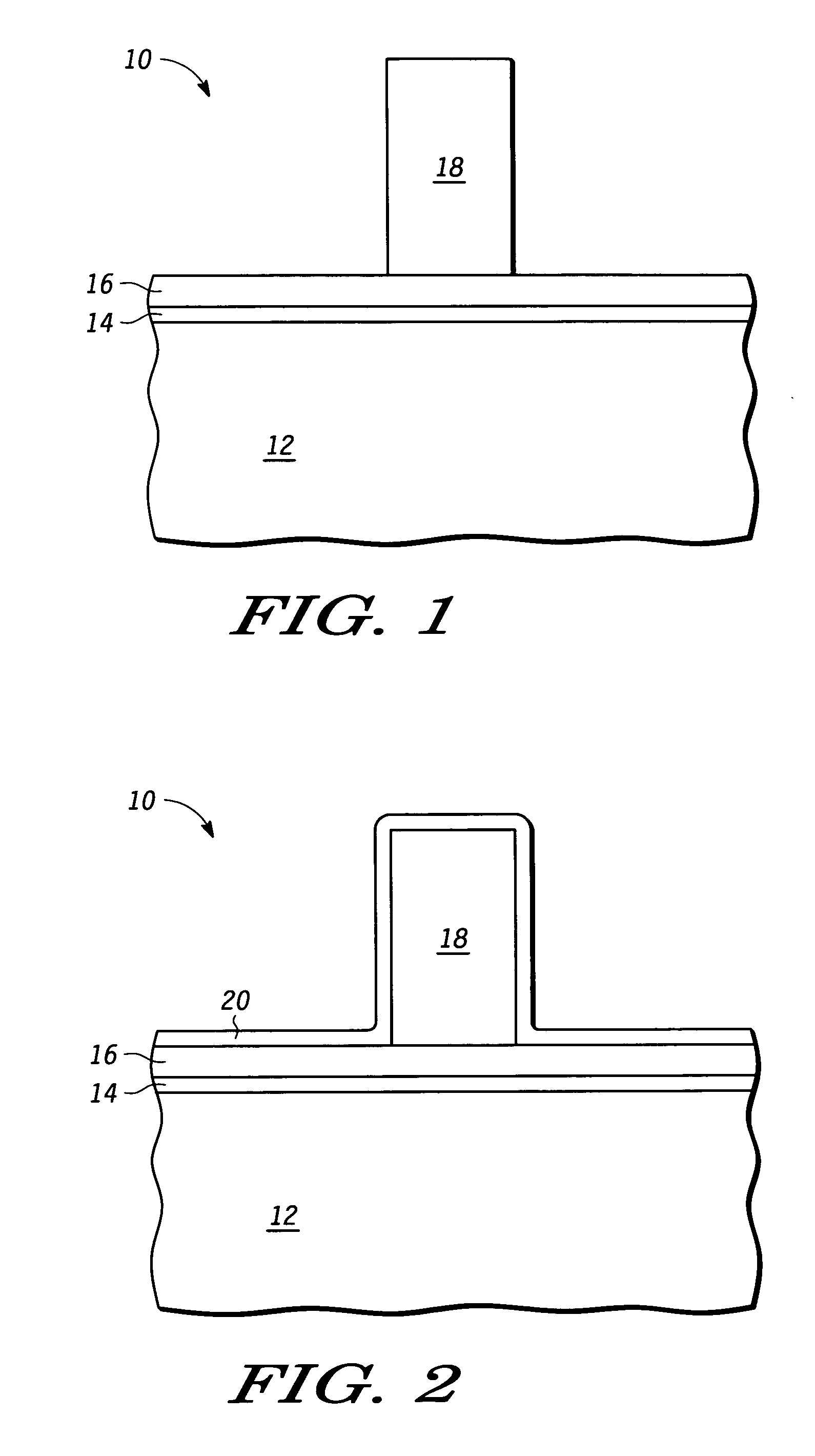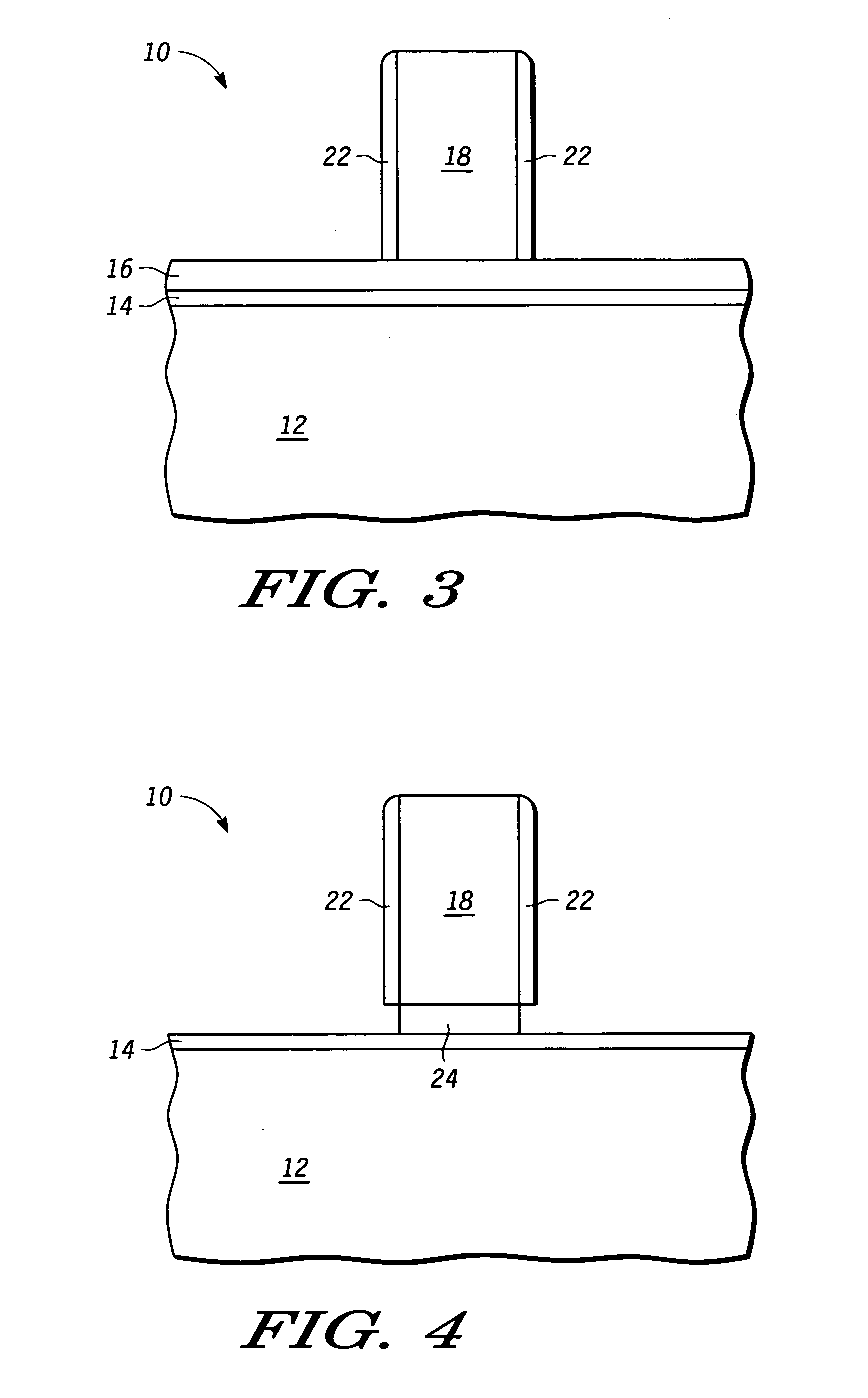Method of making a metal gate semiconductor device
a metal gate and semiconductor technology, applied in the field of integrated circuits, can solve the problems of polysilicon compatibility problems, difficult to find metals with work functions that work, and difficulty in etching these metals
- Summary
- Abstract
- Description
- Claims
- Application Information
AI Technical Summary
Problems solved by technology
Method used
Image
Examples
Embodiment Construction
[0012] In one aspect a semiconductor device has a patterned polysilicon gate over a metal layer that is over a gate dielectric layer, which in turn is over a semiconductor substrate. A thin layer of material, preferably the same material as the gate dielectric, is conformally deposited over the polysilicon gate and over the exposed metal layer. The conformal layer is etched back to form a sidewall spacer on the polysilicon gate and to re-expose the previously exposed portion of the metal layer. The re-exposed metal layer is etched using an etchant that is selective to the gate dielectric material and the sidewall spacer. Even though this etch is substantially anisotropic, it has an isotropic component that would adversely etch the sidewall of the polysilicon gate but for the protection provided by the sidewall spacer. After the re-exposed metal has been removed, a transistor is formed in which the gate is a stack of the polysilicon gate and the unetched portion of the metal layer. T...
PUM
| Property | Measurement | Unit |
|---|---|---|
| thickness | aaaaa | aaaaa |
| thick | aaaaa | aaaaa |
| thick | aaaaa | aaaaa |
Abstract
Description
Claims
Application Information
 Login to View More
Login to View More - R&D
- Intellectual Property
- Life Sciences
- Materials
- Tech Scout
- Unparalleled Data Quality
- Higher Quality Content
- 60% Fewer Hallucinations
Browse by: Latest US Patents, China's latest patents, Technical Efficacy Thesaurus, Application Domain, Technology Topic, Popular Technical Reports.
© 2025 PatSnap. All rights reserved.Legal|Privacy policy|Modern Slavery Act Transparency Statement|Sitemap|About US| Contact US: help@patsnap.com



